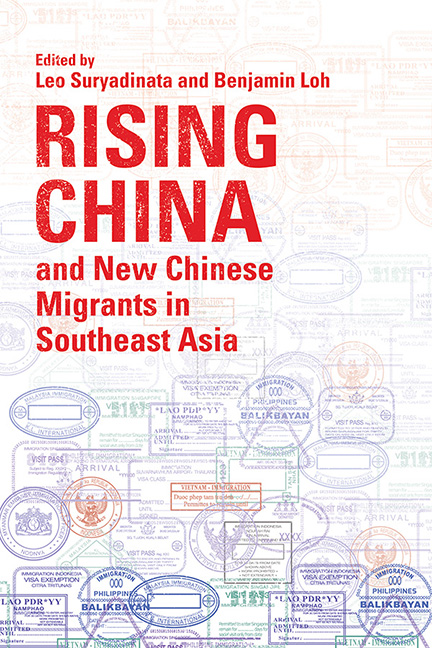Book contents
- Frontmatter
- Contents
- About the Contributors
- Introduction: Rising China and New Chinese Migrants in Southeast Asia
- Part I General Overviews on Rising China and Xin Yimin
- Part II China’s Soft Power, Xin Yimin and Local Communities
- Part III New Chinese Migrants and Local Communities
- Part IV New Chinese Migrants and Local Economies
- Index
9 - New Transnational Chinese Migrants in an Evolving Malaysia
Published online by Cambridge University Press: 09 January 2024
- Frontmatter
- Contents
- About the Contributors
- Introduction: Rising China and New Chinese Migrants in Southeast Asia
- Part I General Overviews on Rising China and Xin Yimin
- Part II China’s Soft Power, Xin Yimin and Local Communities
- Part III New Chinese Migrants and Local Communities
- Part IV New Chinese Migrants and Local Economies
- Index
Summary
In 1974, during the height of the Cold War, the Malaysian Prime Minister, Tun Abdul Razak, visited Beijing, long considered a suspect country as a result of the two countries’ opposing ideological inclination, and thus belonging to different camps in the contestation for influence of the opposing blocs of countries. Little could Razak imagine that the bilateral relationship between the two countries would grow to a stage of closeness and interdependency that manifested over the past decade. During the past decade, China has grown to be Malaysia’s largest trading partner, and one of the principal contributors of direct foreign investment. These developments had inevitably started a new development in the bilateral relationship; namely, the influx of Chinese nationals to Malaysia. This development is interesting considering the historical background of the relations—from that of massive immigration of Chinese into the territories that formed present-day Malaysia. Chinese migration then came to a standstill with the taking over of China by the Chinese Communist Party as Malaya—and later, Malaysia—was fighting an armed insurgency led by the Malayan Communist Party, which was supported by the Chinese. This resumption of Chinese nationals moving to Malaysia has created some ripples, not least among the authorities but also among the public at large.
The rise of the People’s Republic of China that was precipitated by the introduction of the Open Door and Reformation policies since 1978 saw China transform itself from a backward, ideologically dominated country to a modern and economically powerful nation. This transformation process has also undergone changes from a gradual and experimental stage in the 1980s and 1990s to full-blown economic development that saw the country rising to be the fastest growing economy in the world. This transformation also brought massive changes to Chinese business enterprises from the state-owned enterprises that were not performing in line with the changing times to be the multinational corporate bodies that helped to spearhead stronger economic performance for China. In 2010, the country overtook Japan as the second-largest economy in the world. The introduction of the Belt and Road Initiative (BRI) in 2013 further strengthened the development of the Chinese economy and provided impetus for stronger economic performance.
- Type
- Chapter
- Information
- Rising China and New Chinese Migrants in Southeast Asia , pp. 162 - 182Publisher: ISEAS–Yusof Ishak InstitutePrint publication year: 2022

